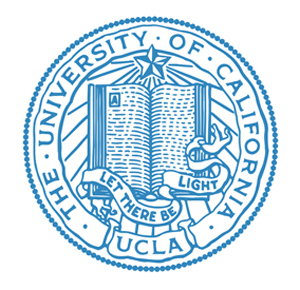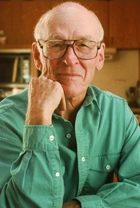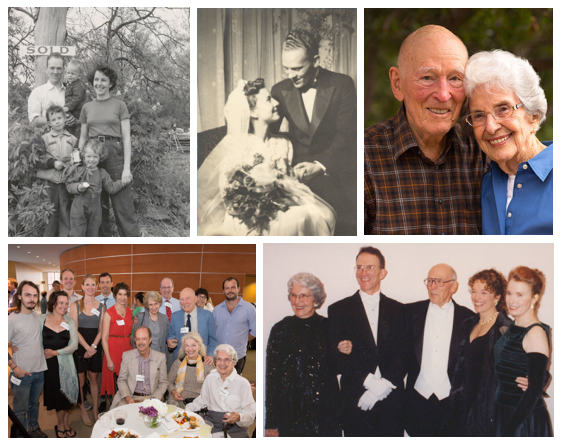 |
In collaboration with the Boyer family, the UCLA Department of Chemistry & Biochemistry,
Paul D. Boyer Memorial Thursday, July 5, 2018 UCLA Faculty Center Please forward this information to all guests who may want to attend the memorial Please RSVP (required) by Wednesday, June 27
|
The family requests that in lieu of flowers, donations can be made by those who wish to one of the opportunities below: Paul D. Boyer Teacher-Scholar Fund MBI Boyer/Parvin Postdoctoral Awards
"When he graduated from university, he won an award for being the most efficient graduating student, which I loved," Lyda Boyer said. "He was so many more things, but he was efficient too." Boyer completed his Ph.D. in biochemistry at the University of Wisconsin in 1943 and soon went to work on a project sponsored by the wartime Committee on Medical Research at Stanford University. The group was tasked with finding a way to stabilize blood plasma proteins so that soldiers could receive lifesaving transfusions in the field. The team succeeded, and the techniques they devised are still in use today. In 1946, he accepted an appointment in the biochemistry department at the University of Minnesota, where he remained until 1963, when he was recruited by UCLA. Throughout his career, Boyer remained fascinated by the inner workings of living things. "The study of life processes has given me a deep appreciation for the marvel of the living cell," he wrote in an autobiographical statement for the Nobel Foundation. "The beauty, the design and the controls honed by years of evolution … are wonderful to contemplate." His daughter, Gail Boyer Hayes, said her father talked that way his whole life. "He would always say, 'We are such elegant organisms,'" she said. Boyer spent the majority of his career at UCLA, where he became director of the university's Molecular Biology Institute in 1965. He held the title until 1983. He became professor emeritus in 1990 and published his last paper in 2002. "It isn't often that we have a scientist who is so excellent in his scientific work and just as excellent as an administrator," said his friend and colleague David Eisenberg, a professor of chemistry & biochemistry and biological chemistry, at UCLA. "Paul always comported himself with dignity and modesty and a nice sense of humor. Everybody liked him."
In 1997, Boyer was one of three scientists awarded the Nobel Prize in chemistry for revealing the mechanisms by which cells create adenosine triphosphate, or ATP, a molecule known as the energy currency of cells. All living organisms, from fungi and bacteria to plants and animals, rely on ATP. It captures the chemical energy released by the combustion of nutrients and transfers it for use in other reactions that require energy, such as building bones, contracting muscles, and transmitting neurological messages. Humans produce and use enormous quantities of ATP each day. Indeed, Boyer once said that the amount of ATP created and consumed by a typical graduate student on a typical day is equal to the weight of the student's body. ATP was discovered by German chemist Karl Lohmann in 1929. By 1960, scientists had determined that the molecule is synthesized inside cells by an enzyme known as ATP synthase. However, they didn't know how ATP synthase created ATP. After decades of research, Boyer theorized that the three distinct parts of the ATP synthase molecule worked together to form a rotating motor structure. He came to this conclusion in the 1970s after experiments showed that three sites on the enzyme were doing the same reaction in the same way, but at different times. "All the sites were doing it identically, and one after another," Boyer told the Los Angeles Times in 1997. "The only way I could see to explain that was internal rotation." He also proposed that rather than using energy to link the chemical building blocks of ATP, ATP synthase used energy to pry itself free of the ATP molecules it formed so that they could be used elsewhere. He called that "the binding change mechanism." These ideas were initially considered controversial. But in the 1980s, English biologist John E. Walker determined the atomic structure of ATP synthase and found that its overall architecture was exactly as Boyer had predicted. "It was startling to see that he could deduce all of this from quite indirect measurements," Eisenberg said. "I attribute it to his marvelous mechanical intuition. He was very gifted with his hands, and I imagine that gift carried over to his scientific work as well."Paul and Lyda also traveled widely, with many of their trips connected to his work. They were guests of the king of Jordan and the shah of Iran, and they led a delegation of scientists who visited China shortly after the Cultural Revolution. Hayes described her father as modest, honest, generous, and a skilled craftsman who built two homes from the ground up and filled them with furniture he constructed. "He could do electrical things and plumbing things," she said. "I don't remember any repair people ever coming to the house. They were very thrifty that way." She added that although her parents left the Mormon church shortly after leaving Utah, they retained Mormon values like education, honesty, and family. "He really believed in humans, and he believed in the ability of science to help humans live better lives," she said. In his final contribution to science, Boyer donated his brain to UCLA so that researchers could use it to study Alzheimer's disease and dementia, although Hayes said it is unclear if he suffered from the condition. The cause of his death was respiratory failure. Boyer is survived by this wife Lyda Boyer, daughters Gail Boyer Hayes and Alexandra Boyer, eight grandchildren, and six great-grandchildren. His son, Dr. Douglas D. Boyer, passed away from cancer in 2001. |
| Please RSVP (required) by Wednesday, June 27 To Chair@chem.ucla.edu; 310-825-3958 |
 |

 Boyer received many honors and awards over the course of his career. He won a Guggenheim Fellowship in 1955 and was elected to the National Academy of Sciences in 1970. He served a term as chairman of the biochemistry section of the American Chemical Society and was president of the American Society of Biological Chemists.
Boyer received many honors and awards over the course of his career. He won a Guggenheim Fellowship in 1955 and was elected to the National Academy of Sciences in 1970. He served a term as chairman of the biochemistry section of the American Chemical Society and was president of the American Society of Biological Chemists.